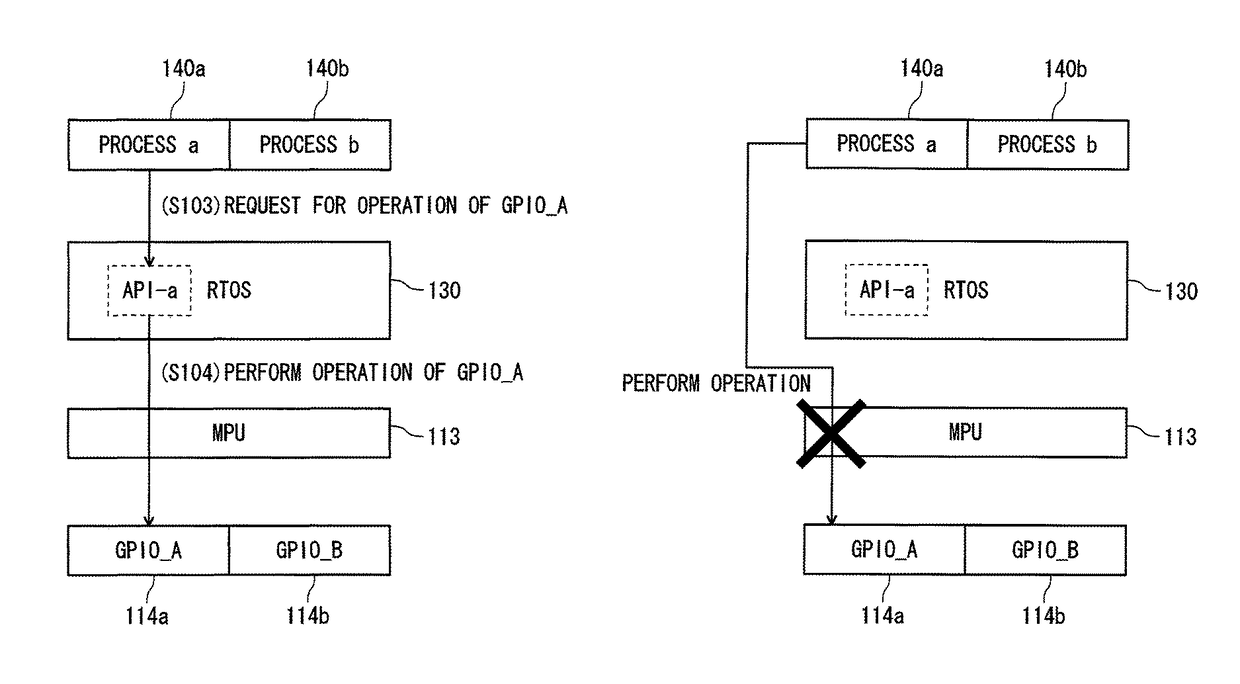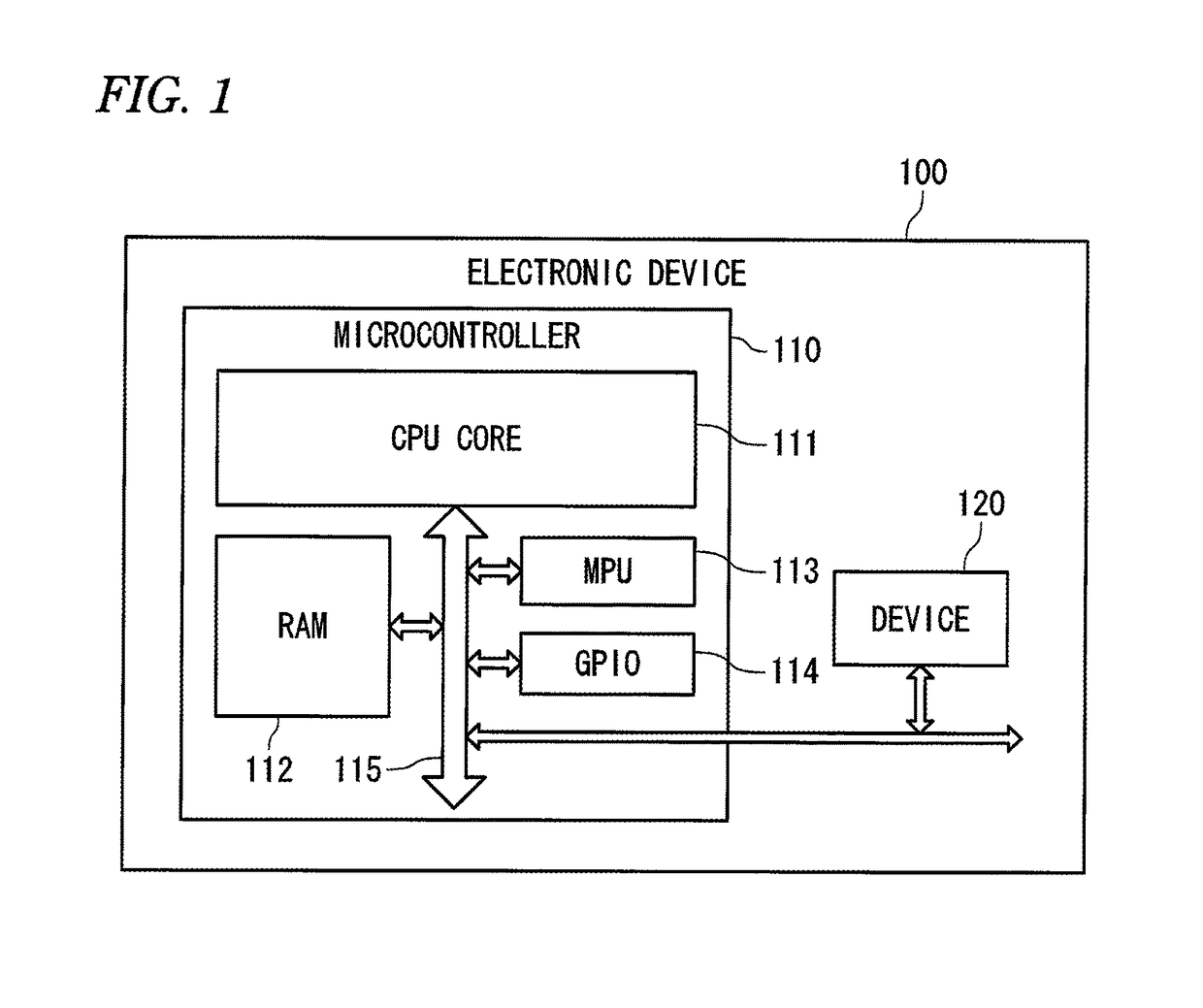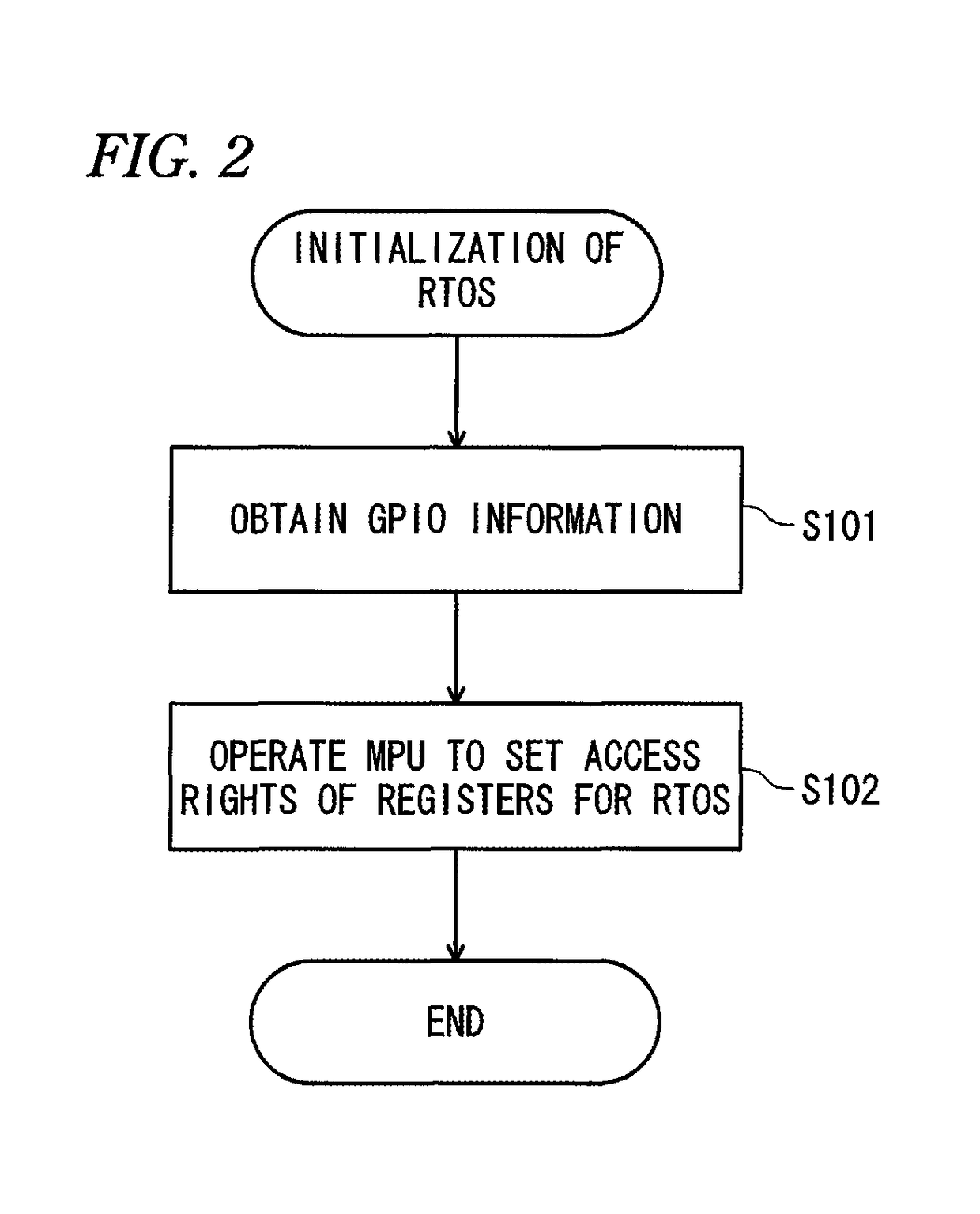Electronic device, operating system and access control method for protection of a register through an application programming interface
a technology of access control and register protection, applied in the field of electronic devices, can solve the problems of ordinarily limited number of access rights which can be set thereto, low degree of freedom, and low degree of freedom
- Summary
- Abstract
- Description
- Claims
- Application Information
AI Technical Summary
Benefits of technology
Problems solved by technology
Method used
Image
Examples
first exemplary embodiment
[0054]In the electronic device 100 having the above-described structure, will be described below a first exemplary embodiment of a procedure that the process operating on the RTOS 130 operates the GPIO 114. Here, a process a 140a and a process b 140b are supposed to operate on the RTOS 130 as independent programs. Further, the GPIO 114 is supposed to be partitioned at intervals of prescribed bits such as 8 bits and treated as two groups of a GPIO_A 114a and a GPIO_B 114b.
[0055]FIG. 2 is a flowchart for explaining a characteristic operation during an initialization of the RTOS 130.
[0056]FIG. 3 is a diagram which schematically shows an operation during the initialization. In the first exemplary embodiment, as common in below-described exemplary embodiments, in the initialization during an activation, the RTOS 130 obtains information of the GPIO 114 (S101) and operates the MPU 113 to set access rights for the RTOS 130 to address spaces where the GPIO registers are respectively present...
second exemplary embodiment
[0063]In an electronic device 100, will be described below a second exemplary embodiment of a procedure that a process operating on an RTOS 130 operates a GPIO 114. FIG. 7 is a diagram which schematically shows an operation of the second exemplary embodiment. As shown in FIG. 7A, in the second exemplary embodiment, the RTOS 130 obtains information of the GPIO 114 as in the first exemplary embodiment and operates an MPU 113 to set access rights for the RTOS 130 to address spaces where GPIO registers are respectively present (S201).
[0064]When the process a 140a operates the GPIO_A 114a, the process a 140a previously makes a declaration of an operation of the GPIO_A 114a to the RTOS 130 as shown in FIG. 7B (S202). An API-c which receives the declaration of the operation is prepared in the RTOS 130.
[0065]Further, the RTOS 130 prepares an API-b which receives a request for operating the GPIO 114 from the process 140 which makes a declaration of the operation and performs the operation of...
third exemplary embodiment
[0069]In an electronic device 100, will be described below a third exemplary embodiment of a procedure that a process operating on an RTOS 130 operates a GPIO 114. FIG. 8 is a diagram which schematically shows an operation of the third exemplary embodiment. As shown in FIG. 8A, in the third exemplary embodiment, the RTOS 130 obtains information of the GPIO 114 as in the first exemplary embodiment and operates an MPU 113 to set access rights for the RTOS 130 to address spaces where GPIO registers are respectively present (S301).
[0070]When the process a 140a operates the GPIO_A 114a as in the second exemplary embodiment, the process a 140a previously makes a declaration of an operation of the GPIO_A 114a to the RTOS 130 as shown in FIG. 8B (S302). In the third example, an API-d which receives the declaration of the operation is prepared in the RTOS 130.
[0071]Here, the API-d exclusively gives an operation right to the process 140 which first makes a declaration of an operation for the ...
PUM
 Login to View More
Login to View More Abstract
Description
Claims
Application Information
 Login to View More
Login to View More - R&D
- Intellectual Property
- Life Sciences
- Materials
- Tech Scout
- Unparalleled Data Quality
- Higher Quality Content
- 60% Fewer Hallucinations
Browse by: Latest US Patents, China's latest patents, Technical Efficacy Thesaurus, Application Domain, Technology Topic, Popular Technical Reports.
© 2025 PatSnap. All rights reserved.Legal|Privacy policy|Modern Slavery Act Transparency Statement|Sitemap|About US| Contact US: help@patsnap.com



